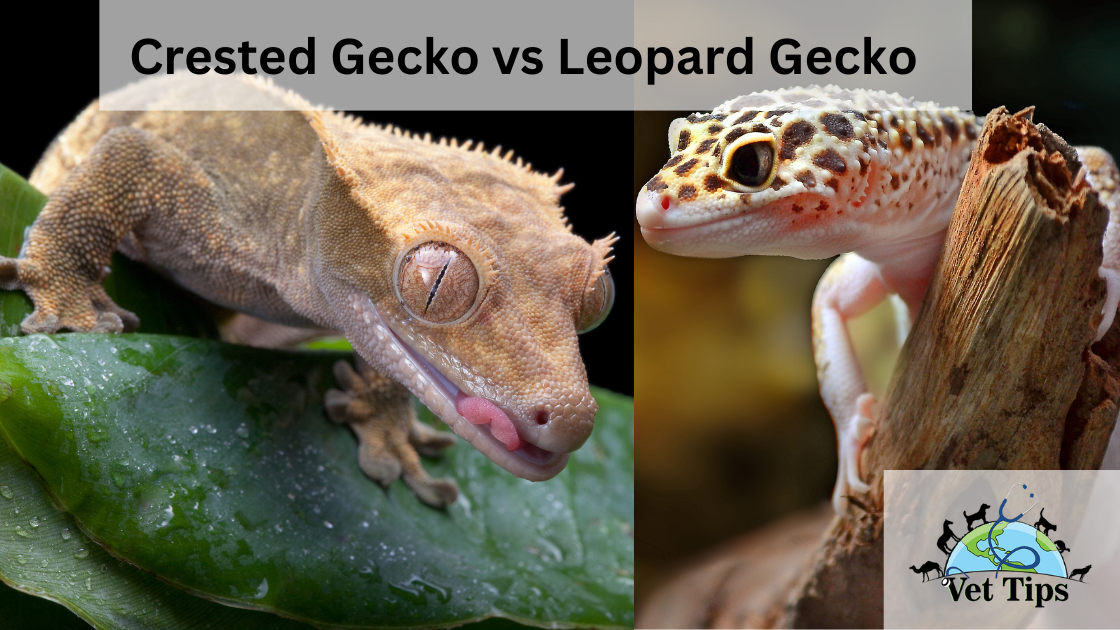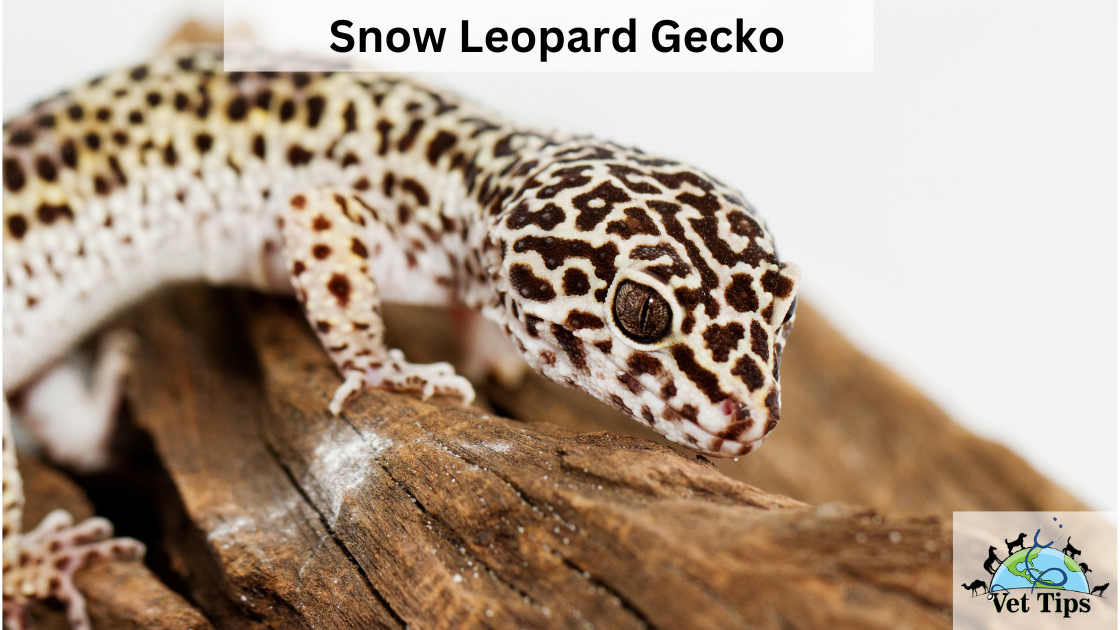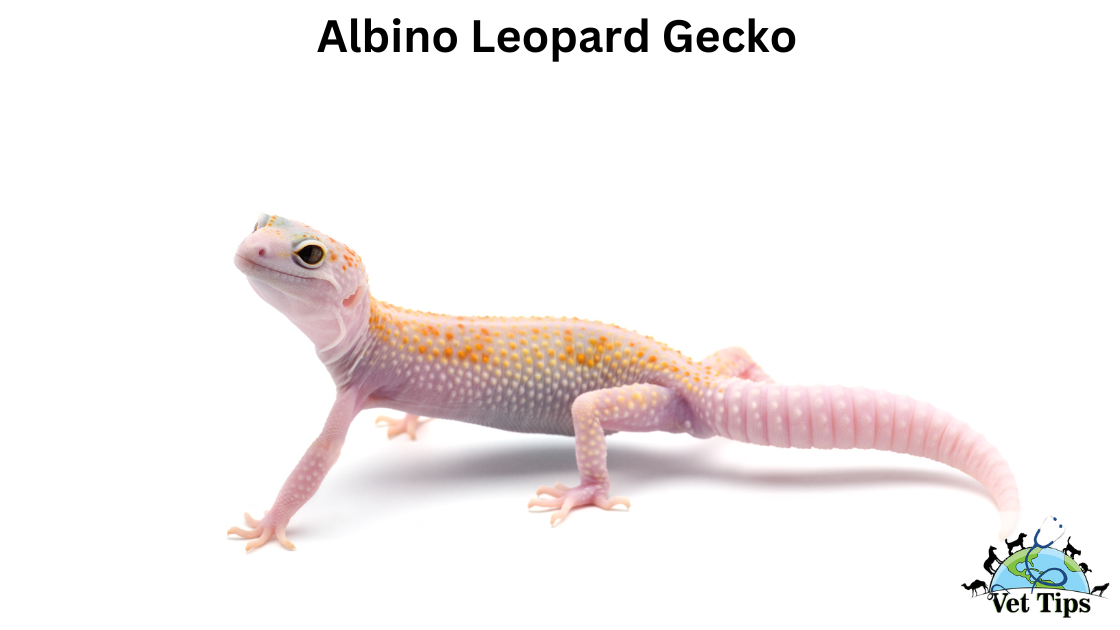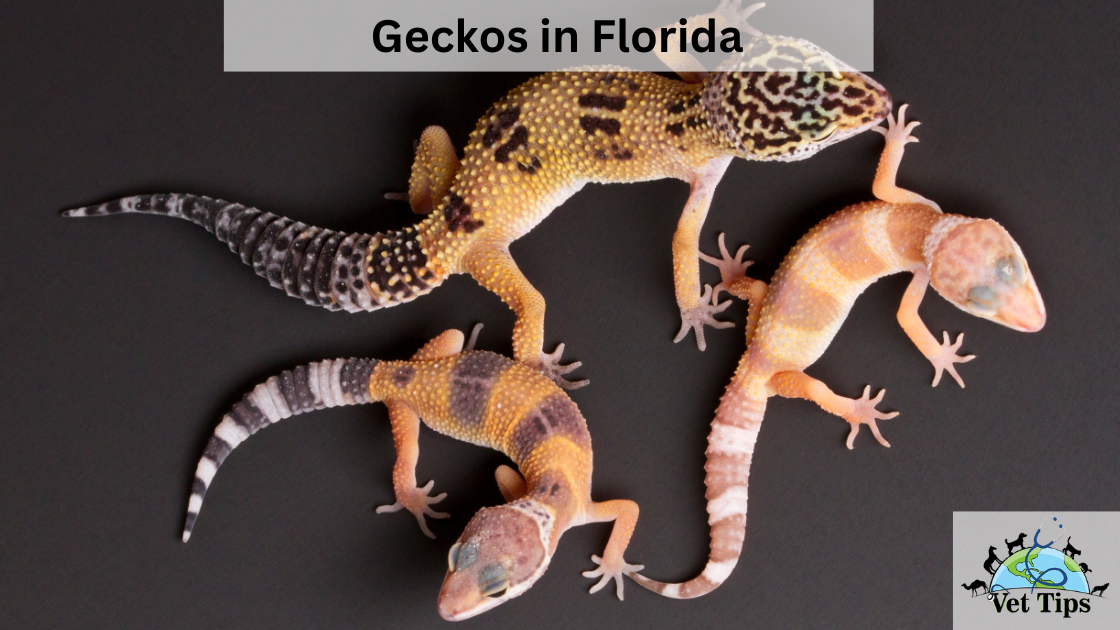The crested gecko and leopard gecko are good pets for beginner reptile keepers since they are cool and easy to care for. But what is the difference between crested gecko vs leopard gecko?
Continue reading to understand the primary distinctions between crested geckos and leopard geckos to determine which kind of gecko will be the most suitable for you, considering your way of life and personal preferences.
Crested vs Leopard Geckos: Overview
Crested geckos are stunning, little geckos with wide-eyed beauty. Although they are naturally reserved, they may become used to their caretakers with persistent and careful treatment. Because they are arboreal geckos, they adore spending time in the thick vegetation that is provided in their warm and humid enclosures. They can easily climb plants and other surfaces thanks to adhesive pads on the bottoms of their feet.
Leopard geckos are seen smiling and having fun. They enjoy mingling with their owners and look forward to being petted and played with. They are terrestrial geckos with claws instead of sticky pads, and they like to run around their desert-like habitat at dawn and sunset.
Crested vs. Leopard Geckos: History
The crested gecko, Correlophus ciliatus, is native to New Caledonia in the South Pacific. Before their rediscovery in the 1990s, scientists believed that these geckos had been extinct forever. Since that time, they have seen an explosion in popularity among those who are passionate about reptiles because to their distinct look and low maintenance requirements.
The leopard gecko, Eublepharis macularius, comes from Pakistan, India, and Afghanistan’s desert areas. Leopard geckos, as opposed to crested geckos, have a longer history of being kept as pets and have been raised in captivity for many generations. This is in contrast to crested geckos. Their easygoing demeanor and eye-catching designs have contributed to their widespread acceptance.
Crested vs Leopard Geckos: Appearance
Crested geckos are named for their beautiful crests, which is how they got their name. They have a head in the shape of a triangle, enormous round eyes with pupils that seem like slits, and crests that go from their head all the way down to their tails. These geckos come in a wide variety of hues and patterns, so each specimen is unique.
leopard geckos have a more robust and muscular structure than other gecko species. They have a peculiar, bumpy texture to their skin and feature a fat storage tail. In addition, their skin is a dark brown color. Their pupils are vertical, and their colour ranges significantly, but all of them have spots and stripes that are similar to those found on leopards, which is how they got their name.
Crested vs. Leopard Geckos: Habitat
Crested geckos are arboreal, which means they spend most of their time in trees and need high shelters. They thrive in temperatures ranging from 72 to 78 degrees Fahrenheit (22 to 25 degrees Celsius), and they enjoy living in humid environments. In order to provide these geckos with an environment that is as close as possible to that of their native home, their cage features a variety of greenery and climbing structures.
leopard geckos are classified as ground-dwelling reptiles. They have a more terrestrial lifestyle and require an environment that permits them to burrow. They like a drier climate with a temperature gradient ranging from 88 to 92 degrees Fahrenheit (31 to 33 degrees Celsius) on the warm side and 72 to 78 degrees Fahrenheit (22 to 25 degrees Celsius) on the colder side. It is essential to their health that you provide them with places to hide and a appropriate substrate.
Crested Geckos vs. Leopard Geckos: Temperament and Behavior
The behavior of crested geckos is typically described as being submissive and laid-back. Compared to leopard geckos, crested geckos often have a higher tolerance for handling and are less prone to bite or lose their tails. These geckos are famous for their ability to scale vertical surfaces and frequently engage in fascinating habits, such as licking their eyeballs in order to keep them clean.
Leopard geckos are usually calm, but they can be nervous and easily stressed. They are not as accustomed to being handled as crested geckos are, and if they sense that they are in danger, they may make an attempt to flee. In addition, leopard geckos have the defense mechanism known as autotomy, which allows them to get rid of their tails if they feel threatened.
Crested vs Leopard Geckos: Diet
Crested geckos are omnivorous, which means that they also devour other foods in addition to fruits, nectar, and insects. Their primary source of nourishment is powdered crested gecko food, which can be purchased in most pet supply stores and provides them with a nutritionally sound diet. This diet could benefit from the addition of occasional live insects, like as crickets or tiny roaches, for example. It is essential to supply a shallow dish of water for hydration, but you need also spray the cage in order to maintain the appropriate levels of humidity.
On the other hand, leopard geckos feed on insects and other arthropods. Their primary source of nutrition is a wide range of live insects, including as crickets, mealworms, and dubia roaches, among others. It is absolutely necessary to supply prey items of the suitable size in order to eliminate any potential choking problems. A supplement containing calcium and vitamin D3 should be sprinkled into their diet to ensure that their bones are healthy.
Crested vs Leopard Geckos: Lifespan
Crested geckos usually live for 15 to 20 years if they are cared for well and live in the right place. Some individuals have been known to survive for even longer because to the breakthroughs that have been made in captive breeding. It is essential to keep in mind that their life expectancy can be affected by a variety of factors, including genetics, food, and the general upkeep of their health.
Leopard geckos normally live between 10 and 20 years, making their lifetime slightly longer than other gecko species. Again, you can help them live a longer life by giving them the proper care, making sure they have a healthy food, and keeping their surroundings free from stress. The particular genetic makeup of an individual leopard gecko can also play a part in deciding the length of time they will live.
FAQs
Are Crested Geckos and Leopard Geckos Territorial?
No, neither crested geckos or leopard geckos are naturally territorial. Both of these species are solitary by nature and may be successfully housed apart from one another without any complications. However, each gecko should have adequate room and supplies in its habitat to avoid violence or stress.
Can I Keep Multiple Leopard Geckos in the Same Enclosure?
Yes, it is possible to house many leopard geckos together if specific requirements are met. To minimize rivalry and territorial conflicts, the enclosure’s size and number of hiding locations, feeding stations, and basking areas must be considered. Introducing similar-sized geckos and monitoring can help group housing work.
Can I Keep Multiple Crested Geckos in the Same Enclosure?
crested geckos are more tolerant of being housed together than leopard geckos, but it is still vital to evaluate their compatibility individually. Evidence shows that certain crested geckos engage in territorial behavior, particularly during the mating season. To reduce violence and stress, provide plenty of room and hiding locations for many crested geckos in the same cage.
Tell us in the comments, how you like our article “Crested Gecko vs Leopard Gecko”
For similar posts like this, click here.
For the source file, click here.




